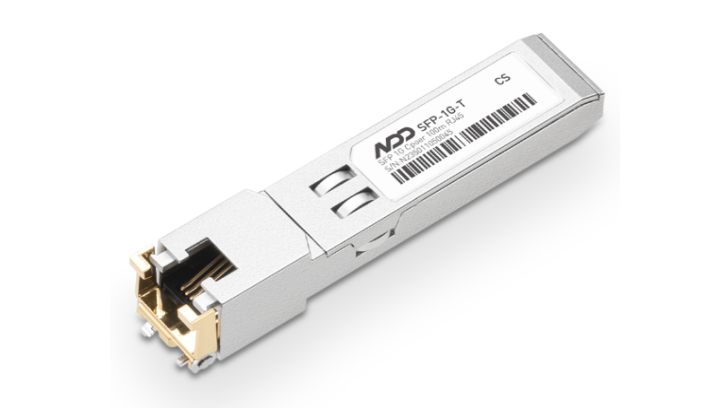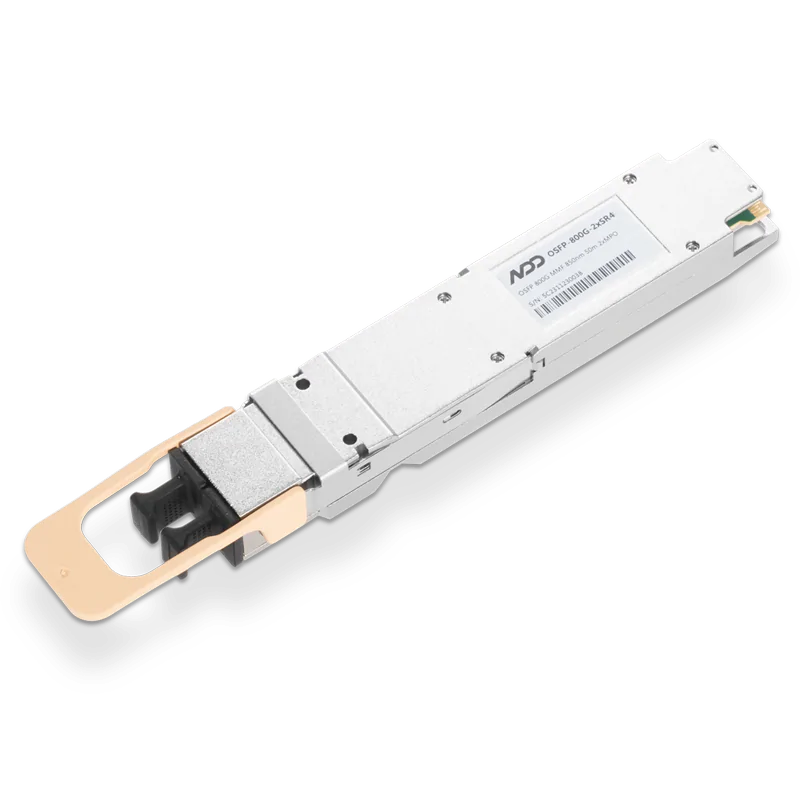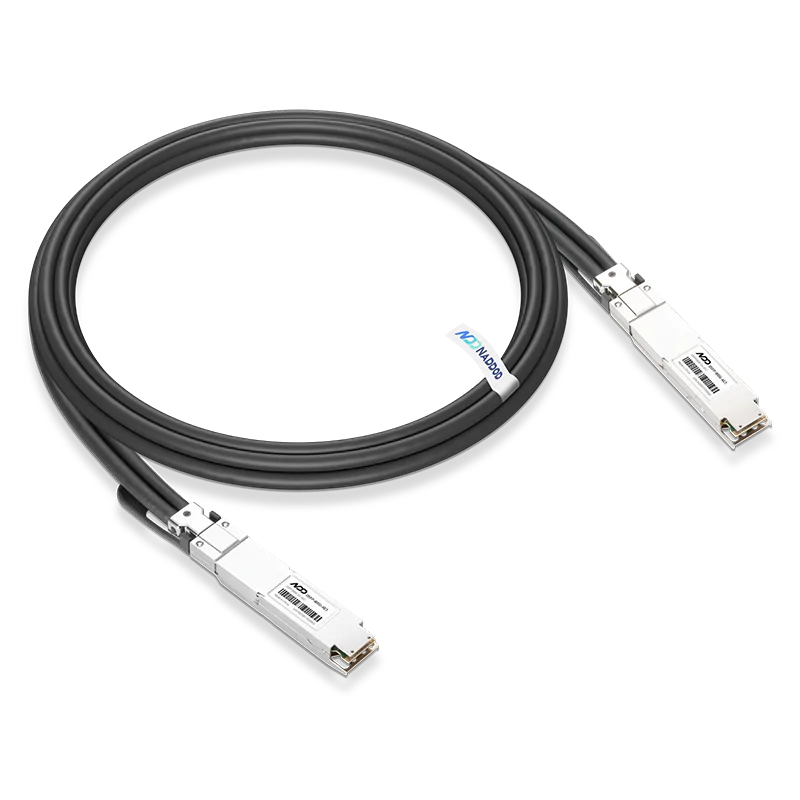The rj45 sfp is also a type of optical transceiver and is known as an optical to rj45 sfp. With high performance, low power consumption and compact design, short distance data transmission is the main application of the rj45 sfp.
In addition, they not only compensate for the lack of transmission distance of SFP+ high-speed cables, but also enable data transmission at rates of 10G directly over existing copper cabling systems, whereas the use of SFP+ optical transceivers requires cabling with fiber-optic cables, which can increase the cost of network deployment.

The pure Gigabit optical module is an rj45 sfp with package type SFP, which is connected to the host with an SFP gold finger on one end and an electrical port (i.e. RJ45 interface) on the external end. It is generally used in the case of insufficient network ports, i.e. the SFP optical port can be converted into an RJ45 electrical port by using SFP-1G-T. The transmission rate is 1000Mbps, which is designed for high-speed communication at a maximum rate of 1.25Gbps (Fibre Channel rate of 1.0625Gbps); it can meet the needs of operators, broadcasters, residential networks, small and medium-sized enterprises, security industry, education networks and cyber cafes for Gigabit SFP connectivity solutions. The transmission distance is 100 m. This is because of the attenuation phenomenon when the electric signal is transmitted in twisted pair, so the maximum transmission distance of the electric signal in twisted pair is 100 m. Therefore, the electric port module can only be selected when the transmission distance is short.
The Adaptive SFP Gigabit Power Port Module is a 10/100/1000BASE triple-speed integrated gigabit optical transceiver on a single CMOS chip. It can be used for both Fast Ethernet and Gigabit Ethernet.
This SFP module supports 10/100/1000BASE-T running on a Serial Gigabit Media Independent Interface host system (SGMII), which does not support adaptive Gigabit Ethernet on the host system. The Adaptive SFP Gigabit Port Module uses the 1000BASE-X adaptive information to receive configuration options from the host to adjust the adaptive characteristics of the copper. In the host system, the Adaptive SFP Gigabit rj45 sfp will be treated as an optical transceiver by the system. From the host’s point of view, this is the transmission signal to acknowledge receipt of the 1000BASE-X autonegotiation process for the Adaptive SFP Gigabit Port Module from the remote link.
The Adaptive SFP Gigabit electrical interface module implements all the physical layer functions of 1000BASE-T, 100BASE-TX and 10BASE-T Ethernet over standard Cat5 Category 5 unshielded (UTP) cable links up to 100m (328ft) in length. Its interface can operate over standard Cat3 Category 3, Cat4 Category 4 and Cat5 Category 5 twisted pair cable. Cat5e Super Category 5 or Cat6 Category 6 cables can be used safely. As twisted pair cables are more flexible, they are suitable for short cable runs and complex routing.
And 10 Gigabit optical to rj45 sfp is also known as 10G SFP+ rj45 transceiver , this module is designed for high speed communication links, compared to common optical module, the power consumption of 10 Gigabit optical to electrical module is one half of common optical module, and the performance is stable, it can realize 10G transmission network through network cable, it is widely used in 10 Gigabit Ethernet.
10G SFP+ RJ45 Transceiver Description
10G SFP+ provides RJ45 interface, mainly integrated in switches, NICs and other products, with full duplex transmission method with acoustic suppression, PAM16 pulse amplitude modulation technology and standard operating bandwidth requirement of 417MHz.
In addition, the 10GBASE-T SFP+ electrical interface optical transceiver can save at least 0.5W in power consumption compared to the SFP+ high-speed cable, and the RJ-45 interface can be used for both the SFF-8431 and SFF-8432 MSA standards. Its RJ-45 interface can support both shielded and unshielded twisted-pair cables.
SFP+ High Speed Cable VS 10G SFP+ RJ45 Transceiver VS SFP+ Optical Module
- Now the link distance between devices in most data centres is between 10m and 100m, the use of 10G SFP+ electrical port optical transceivers can make up for the lack of transmission distance of SFP+ high-speed cables.
- 10G SFP+ electrical port optical module using RJ45 interface, and super category 6 or category 7 network cable together, and the cost of copper cabling is lower than that of optical cabling.
- The 10G SFP+ electrical port optical module can be used directly in an existing copper cabling system to achieve 10G transmission, while the use of SFP+ optical transceivers requires cabling with fibre optic cables, which can increase deployment costs. If you want to use SFP+ optical modules in existing copper cabling systems, you will need to add equipment such as Ethernet switches or optical converters.
In summary, the rj45 sfp is a low power consumption module with an RJ45 interface, which is different from the optical module and offers no less advantages than the optical transceiver.

 800GBASE-2xSR4 OSFP PAM4 850nm 50m MMF Module
800GBASE-2xSR4 OSFP PAM4 850nm 50m MMF Module- 1Direct Attach Cables for Data Center Interconnects
- 2WDM Modules in MAN Everything you Need to Know
- 3Understanding PAM4 Modulation: A Beginner Guide
- 4NADDOD 1.6T XDR Infiniband Module: Proven Compatibility with NVIDIA Quantum-X800 Switch
- 5Vera Rubin Superchip - Transformative Force in Accelerated AI Compute































